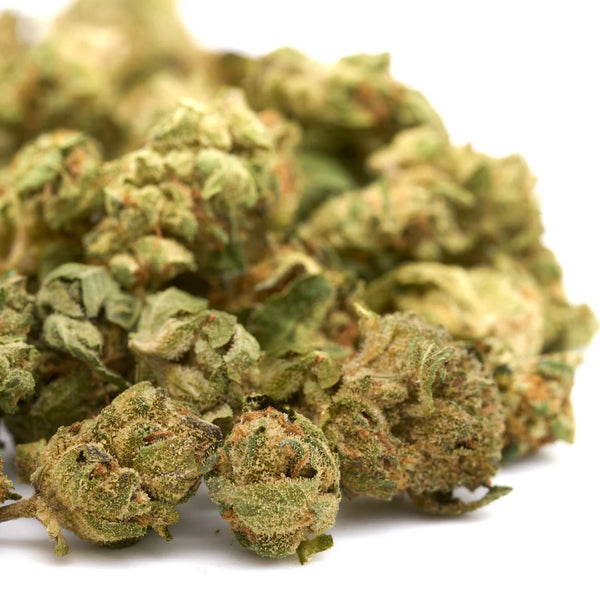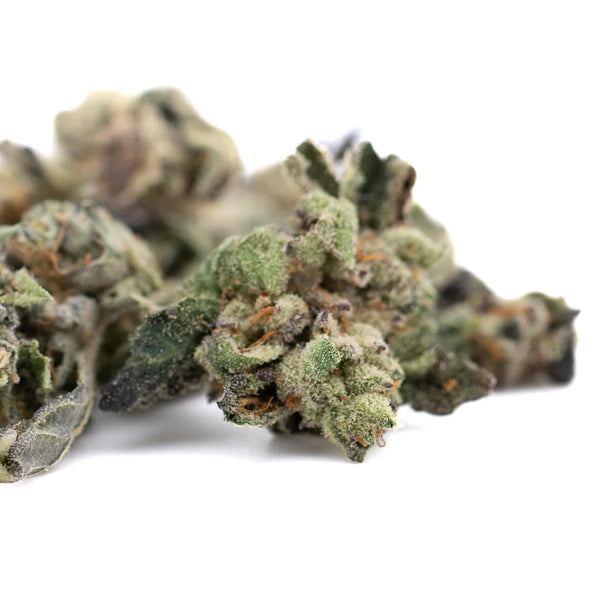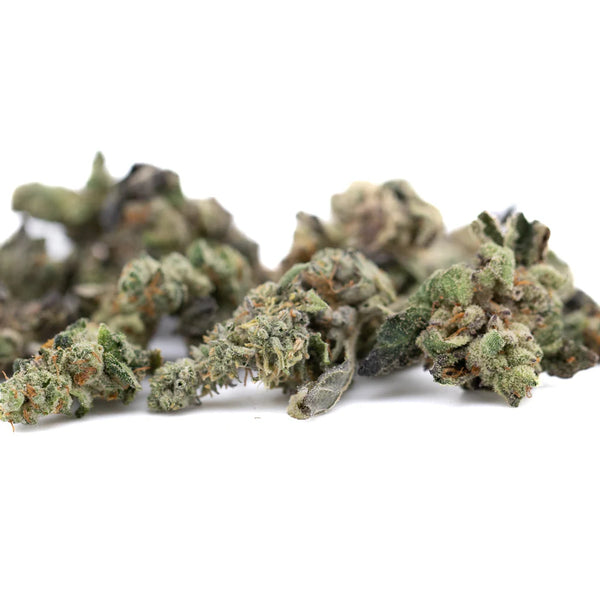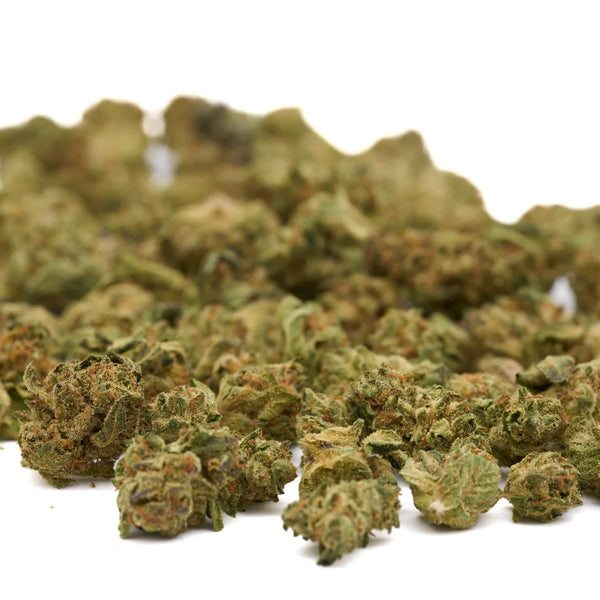No Products in the Cart
Black Friday: 40% OFF Full-Term THCa Flower + 30% OFF THCa Indoor, Vapes and Concentrates

When shopping for THCa smalls quality products, many consumers wonder whether they're sacrificing quality for affordability. The truth is that "smalls" – smaller buds that develop lower on the cannabis plant – can deliver the same potency and effects as their full-sized counterparts, but at a fraction of the price. However, not all smalls are created equal, and the cultivation method plays a crucial role in determining the final product quality.
The debate between greenhouse vs indoor hemp cultivation has intensified as the THCa flower market continues to expand. Each growing method produces distinct characteristics that affect everything from cannabinoid content to terpene profiles, visual appeal, and overall user experience. Understanding these differences is essential for making informed purchasing decisions that align with your preferences and budget.
In this comprehensive comparison, we'll examine two popular strains grown using different THCa flower growing methods: Strawberry Diesel cultivated in a greenhouse environment and Lemon OG produced through controlled indoor cultivation. By analyzing these specific examples, we'll uncover how each cultivation method THCa affects the final product's potency, flavor, appearance, and value proposition.
Whether you're a budget-conscious consumer seeking affordable greenhouse THCa options or a connoisseur willing to invest in premium indoor THCa, this guide will help you understand what you're paying for and which cultivation method best serves your needs. Let's dive deep into the science, art, and economics of THCa flower production.
Greenhouse THCa flower cultivation represents a hybrid approach that combines the best elements of outdoor and indoor growing. This method harnesses natural sunlight while providing protection from harsh weather conditions, pests, and other environmental variables that can compromise plant health and cannabinoid production.
Greenhouse cultivation offers several distinct benefits that make it an attractive option for producing affordable greenhouse THCa products. First and foremost, natural sunlight provides a full spectrum of light that's impossible to replicate artificially. The sun's rays contain wavelengths that promote robust plant development, enhance terpene production, and contribute to the overall vitality of the cannabis plant. This natural light exposure often results in plants that develop more complex cannabinoid and terpene profiles compared to their outdoor counterparts.
Temperature and humidity control in greenhouse environments allow cultivators to extend growing seasons and maintain optimal conditions year-round. Advanced greenhouse facilities utilize climate control systems that can adjust ventilation, heating, and cooling to keep plants thriving regardless of external weather conditions. This level of environmental management ensures consistency while still benefiting from natural light cycles.
Strawberry Diesel greenhouse-grown smalls exhibit characteristics unique to this cultivation method. The strain's distinctive diesel and berry terpene profile flourishes under natural light conditions, developing aromatic complexity that some cultivators argue surpasses indoor-grown alternatives. The gradual light intensity changes throughout the day and across seasons can stress plants in beneficial ways, encouraging trichome production and cannabinoid synthesis.
The small buds THCa content in greenhouse-grown Strawberry Diesel typically ranges from 20-25%, which is competitive with many indoor operations while costing significantly less to produce. The natural light spectrum promotes a balanced cannabinoid profile, with THCa developing alongside complementary compounds like CBD, CBG, and various minor cannabinoids that contribute to the entourage effect.
One of the most compelling arguments for greenhouse vs indoor hemp cultivation is the dramatic reduction in energy costs. Greenhouse operations can reduce electricity consumption by 50-75% compared to indoor facilities, as they rely primarily on natural sunlight rather than high-intensity grow lights. This energy efficiency translates directly to lower retail prices without necessarily compromising quality.
From an environmental perspective, greenhouse cultivation represents a more sustainable approach to cannabis production. The reduced carbon footprint associated with lower energy consumption makes greenhouse-grown products appealing to environmentally conscious consumers. Additionally, many greenhouse operations implement water recirculation systems and organic growing practices that further minimize environmental impact.

Indoor THCa cultivation represents the gold standard for those seeking maximum control over every aspect of plant development. This method allows cultivators to create perfectly optimized environments where every variable – from light spectrum and intensity to temperature, humidity, and nutrient delivery – is precisely calibrated to maximize cannabinoid and terpene production.
The primary benefit of premium indoor THCa production is absolute environmental control. Unlike greenhouse operations that must adapt to natural light cycles and seasonal changes, indoor facilities create artificial growing conditions that remain constant year-round. This consistency eliminates variables that can affect plant development, resulting in remarkably uniform products from one harvest to the next.
Advanced indoor operations utilize full-spectrum LED grow lights that can be programmed to deliver specific light wavelengths at precise intensities throughout different growth stages. This targeted approach to light delivery promotes optimal photosynthesis while encouraging the production of secondary metabolites like terpenes and cannabinoids. Some cultivators even use UV supplementation to stress plants in beneficial ways that boost trichome production and THCa concentration.
Climate control systems in indoor facilities maintain temperature and humidity within narrow ranges that would be impossible to achieve in greenhouse settings. This precision prevents stress that can reduce yields or compromise quality, while also eliminating concerns about mold, mildew, and pest infestations that can plague outdoor and greenhouse operations.
Lemon OG indoor-grown smalls showcase the full potential of this strain's genetics. The citrus-forward terpene profile – dominated by limonene, myrcene, and caryophyllene – develops with remarkable clarity and intensity under controlled indoor conditions. By eliminating environmental stressors and providing optimal conditions throughout the entire growth cycle, indoor cultivation allows Lemon OG to express its genetic potential fully.
The consistency achieved through indoor THCa cultivation means that each batch of Lemon OG smalls should closely resemble previous batches in appearance, aroma, potency, and effects. This predictability is highly valued by consumers who want to know exactly what they're getting with each purchase. For medical users who rely on consistent cannabinoid profiles for symptom management, this reliability can be particularly important.
Several factors contribute to the premium nature of indoor THCa cultivation. First, the controlled environment allows for longer vegetative periods and more gradual flowering transitions, which can result in more developed trichome structures and higher cannabinoid concentrations. Indoor-grown Lemon OG smalls typically test between 24-28% THCa, representing the upper range of what's achievable with this strain.
The absence of environmental contaminants is another quality factor. Indoor facilities can implement strict sanitation protocols and air filtration systems that prevent exposure to pollutants, pesticides, and other unwanted substances. This clean cultivation environment produces pristine flowers that meet the highest purity standards.
Hand-trimming is more common in premium indoor operations, preserving delicate trichomes that machine trimming might damage. Even THCa smalls quality from indoor grows often receives the same careful post-harvest handling as top-shelf buds, ensuring that these smaller flowers retain maximum potency and bag appeal.
The differences between greenhouse THCa flower and indoor THCa cultivation become immediately apparent when examining the physical characteristics of the buds. These visual and structural distinctions reflect the different growing conditions and can significantly impact consumer perception and experience.
Premium indoor THCa like Lemon OG typically produces denser, more compact buds with tightly stacked calyxes. The controlled environment and optimized light penetration encourage lateral bud development rather than the airier structure sometimes seen in greenhouse grows. When you squeeze an indoor Lemon OG small, it should feel solid and resinous, with minimal give despite its smaller size.
In contrast, greenhouse THCa flower like Strawberry Diesel often develops a slightly more open structure. This isn't necessarily a quality defect – it's simply a characteristic of plants grown under natural light conditions where light penetration varies throughout the day. These buds may feel slightly less dense but can actually be easier to break apart and prepare for consumption.
Trichome density represents one of the most significant visual indicators of THCa bud quality factors. Indoor-grown Lemon OG typically exhibits exceptional trichome coverage, with stalked glandular trichomes (the resin-producing structures) coating every visible surface of the bud. Under magnification, these trichomes should appear like a forest of tiny mushrooms, with clear or milky heads indicating optimal harvest timing.
Greenhouse vs indoor hemp trichome production can vary, but high-quality greenhouse operations like those producing Strawberry Diesel can achieve impressive resin production that rivals indoor grows. The natural UV exposure from sunlight can actually stimulate trichome production as a protective mechanism, potentially resulting in robust resin development. However, the coverage may be slightly less uniform compared to indoor cultivation.
Color variations between cultivation method THCa products often reflect differences in growing conditions. Indoor Lemon OG typically displays vibrant, uniform coloration with deep greens accented by purple and orange hues where genetics allow. The consistent environment prevents stress-related color changes and produces aesthetically pleasing buds with commercial appeal.
Greenhouse THCa flower like Strawberry Diesel may show more color variation both within individual buds and across batches. Natural temperature fluctuations, especially cooler nighttime temperatures late in flowering, can trigger anthocyanin production that creates purple, pink, or reddish hues. While this can result in beautiful, unique coloration, it also means less predictability in appearance.
The pistil (hair) coverage also differs between methods. Indoor-grown buds often feature more abundant, vibrantly colored pistils that maintain their orange or red coloration. Greenhouse buds may have fewer visible pistils or pistils that have degraded slightly due to natural environmental exposure, though this doesn't necessarily indicate lower quality.

Understanding how THCa flower growing methods impact cannabinoid production is crucial for consumers seeking specific potency levels. While genetics ultimately determine a strain's maximum potential, cultivation techniques can either optimize or limit that potential.
Premium indoor THCa operations can consistently push strains to their genetic limits. By eliminating environmental stressors and providing perfectly calibrated nutrients, lighting, and climate conditions, indoor Lemon OG regularly achieves THCa concentrations in the 24-28% range. Some exceptional batches may even exceed 30% THCa, placing them among the most potent cannabis flowers available.
The consistency of indoor THCa cultivation means that potency variations between batches are minimal. Testing results should fall within a narrow range, providing consumers with reliable expectations. This predictability extends beyond just THCa to include the full cannabinoid profile, with consistent ratios of minor cannabinoids that contribute to the entourage effect.
Affordable greenhouse THCa like Strawberry Diesel typically tests in the 20-25% THCa range, which remains highly potent by any standard. While this may be slightly lower than premium indoor products, the difference in practical effects is often negligible for most consumers. The natural growing conditions can actually promote a more balanced cannabinoid profile, with higher levels of CBG, CBC, and other minor cannabinoids that indoor grows might not optimize for.
The small buds THCa content in greenhouse operations can sometimes exceed main cola potency due to more efficient light penetration lower in the canopy. Unlike dense indoor environments where lower buds may receive less light, greenhouse operations often achieve more even light distribution throughout the plant structure.
When evaluating THCa bud quality factors, it's important to look beyond simple THCa percentages. The presence and ratios of other cannabinoids, including CBDA, CBGA, THCVA, and others, contribute significantly to the overall experience. Some consumers report that moderate-THCa greenhouse flower with a rich minor cannabinoid profile provides more desirable effects than ultra-high THCa indoor flower with a less diverse cannabinoid spectrum.
Reputable producers of both greenhouse vs indoor hemp products should provide batch-specific lab testing that confirms not only THCa content but also screens for contaminants like heavy metals, pesticides, and microbial growth. This testing ensures that regardless of cultivation method, consumers receive safe, accurately labeled products.
Terpenes – the aromatic compounds that give cannabis its distinctive smell and flavor – are incredibly delicate molecules that can degrade rapidly under suboptimal conditions. The cultivation method THCa producers employ significantly impacts terpene development and preservation.
Indoor THCa cultivation excels at terpene preservation through environmental control. By maintaining optimal temperature and humidity levels during both the growing and drying phases, indoor operations can preserve volatile terpenes that might otherwise evaporate. Lemon OG's signature limonene profile – responsible for its citrus aroma – remains potent and pronounced when grown indoors with careful post-harvest handling.
The controlled environment also allows cultivators to manipulate terpene production through strategic environmental stress. Some growers lower nighttime temperatures during late flowering to encourage terpene synthesis, or adjust light spectrum to promote specific terpene profiles. These techniques can enhance the aromatic complexity of strains like Lemon OG, creating exceptional flavor experiences.
Advanced indoor operations often employ low-temperature drying rooms with precise humidity control, preventing the rapid terpene degradation that can occur during improper drying. The result is premium indoor THCa that maintains peak terpene levels from harvest through consumption.
Greenhouse THCa flower like Strawberry Diesel can develop remarkably complex terpene profiles under natural growing conditions. The variable light intensity, natural temperature fluctuations, and other environmental factors can stress plants in ways that actually promote terpene diversity. Some cultivators and consumers argue that greenhouse-grown flower offers more nuanced, "full-spectrum" terpene expressions compared to the sometimes one-dimensional profiles of indoor flower.
The natural UV exposure in greenhouse environments can stimulate the production of protective compounds, including certain terpenes. This may explain why Strawberry Diesel's distinctive diesel fuel and berry aroma often presents with additional complexity when greenhouse-grown – subtle notes of earth, spice, and citrus that complement the dominant terpenes.
However, affordable greenhouse THCa operations must be particularly careful during harvest and post-processing. Higher ambient temperatures in greenhouses can accelerate terpene evaporation if not properly managed. The best greenhouse producers implement climate-controlled drying rooms comparable to those used in indoor operations, preserving the complex terpene profiles their growing method encourages.
When comparing THCa smalls quality across cultivation methods, terpene content often matters more than THCa percentage for overall satisfaction. Terpenes modulate the effects of cannabinoids through the entourage effect, influence flavor and aroma, and can provide therapeutic benefits independent of cannabinoid content.
High-quality examples of both greenhouse vs indoor hemp cultivation can produce exceptional terpene profiles. The key difference lies in character rather than quality – indoor flower often presents more concentrated, focused terpene expressions, while greenhouse flower may offer broader, more complex aromatic experiences.
Understanding the economics behind different THCa flower growing methods helps consumers make informed purchasing decisions that align with their budgets and quality expectations.
Premium indoor THCa commands higher prices due to substantial operational costs. Commercial grow lights consume enormous amounts of electricity, with some facilities spending thousands of dollars monthly on power alone. Climate control systems, including HVAC equipment, dehumidifiers, and air filtration, add additional operational expenses. Labor costs are also higher, as indoor cultivation requires meticulous attention to detail and specialized knowledge.
These costs are reflected in retail pricing, with indoor THCa cultivation smalls typically priced 30-50% higher than comparable greenhouse products. However, consumers paying premium prices receive several benefits: higher THCa concentrations, exceptional terpene preservation, superior visual appeal, and batch-to-batch consistency.
Affordable greenhouse THCa offers compelling value for budget-conscious consumers. The reduced overhead costs associated with natural lighting and less intensive climate control allow producers to offer quality products at accessible price points. Strawberry Diesel greenhouse smalls often cost 40-60% less than premium indoor alternatives while still delivering potent, flavorful experiences.
For consumers primarily concerned with small buds THCa content and effects rather than bag appeal or brand prestige, greenhouse smalls represent exceptional value. The cost savings allow consumers to purchase larger quantities, making greenhouse options ideal for regular users or those using cannabis for wellness purposes.
When evaluating THCa bud quality factors relative to price, consider cost per milligram of THCa rather than just price per gram of flower. A $40 eighth of 28% THCa indoor flower contains approximately 980mg of THCa, while a $25 eighth of 22% THCa greenhouse flower contains about 770mg of THCa. The premium indoor product costs 60% more but only contains 27% more THCa.
However, THCa content doesn't tell the complete story. The enhanced terpene preservation, superior consistency, and overall experience of premium indoor THCa may justify the premium for some consumers. Others may find that greenhouse THCa flower meets their needs perfectly while leaving more money in their wallets.
The ideal choice between greenhouse vs indoor hemp depends on individual priorities. Connoisseurs seeking the absolute best may prefer indoor cultivation's consistency and refinement. Value-focused consumers or those new to THCa might find greenhouse products more approachable. Many experienced users maintain a rotation of both, choosing indoor for special occasions and greenhouse for daily use.

After examining every aspect of cultivation method THCa production, the answer to which method is superior depends entirely on what "winning" means to you as a consumer.
Indoor THCa cultivation exemplified by Lemon OG smalls offers undeniable advantages: maximum potency, exceptional consistency, superior visual appeal, and optimized terpene preservation. For consumers who prioritize premium quality, predictable experiences, and are willing to pay for perfection, indoor-grown products represent the pinnacle of cannabis cultivation.
Greenhouse THCa flower like Strawberry Diesel provides a different but equally valid value proposition. These products deliver substantial potency, complex terpene profiles, and satisfying effects at prices that make regular consumption accessible. For environmentally conscious consumers or those seeking natural cultivation methods, greenhouse growing offers the best of both worlds.
The beauty of the modern THCa market is that consumers don't need to choose just one THCa flower growing method. Both cultivation approaches have legitimate merit, and the "best" choice varies based on budget, preferences, and intended use. Some situations call for the refined excellence of premium indoor THCa, while others are perfectly served by affordable greenhouse THCa.
What matters most is purchasing from reputable producers who prioritize quality regardless of cultivation method, provide transparent lab testing, and offer products that meet your specific needs and expectations.
Are THCa smalls less potent than full-sized buds?
No, THCa smalls quality in terms of cannabinoid content is typically identical to larger buds from the same plant. Smalls develop lower on the plant but contain the same trichome structures that produce THCa. Laboratory testing confirms that small buds THCa content is comparable to top-shelf colas, making smalls an excellent value choice.
How much can I save buying greenhouse instead of indoor?
Affordable greenhouse THCa typically costs 40-60% less than comparable premium indoor THCa products. For example, if indoor smalls retail for $40 per eighth, similar quality greenhouse smalls might cost $20-25. Over time, these savings can be substantial for regular consumers.
Does greenhouse growing affect THCa shelf life?
When properly cured and stored, both greenhouse THCa flower and indoor THCa cultivation products maintain quality for 6-12 months. The key factors are post-harvest handling and storage conditions rather than the original growing method. Store all THCa flower in airtight containers away from light, heat, and moisture for optimal preservation.
Which cultivation method is more environmentally friendly?
Greenhouse vs indoor hemp cultivation shows clear environmental advantages for greenhouse growing. The reliance on natural sunlight reduces electricity consumption by 50-75% compared to indoor operations. This lower energy usage translates to a significantly smaller carbon footprint, making greenhouse products more sustainable.
Can you tell the difference between methods when consuming?
Experienced consumers can often detect subtle differences in THCa bud quality factors between cultivation methods. Indoor flower typically offers more concentrated flavors and consistent effects, while greenhouse flower may provide more complex, nuanced experiences. However, in blind comparisons, many consumers find high-quality examples of both methods equally enjoyable.
Which strains work best for each growing method?
Different strains respond differently to cultivation method THCa approaches. Delicate, terpene-rich strains like Lemon OG often excel in controlled indoor environments, while hardy, vigorous strains like Strawberry Diesel thrive in greenhouse settings. The best producers match strains to cultivation methods that showcase their genetics optimally.
Ready to experience the difference between cultivation methods firsthand? Whether you're drawn to the refined excellence of premium indoor THCa or the exceptional value of affordable greenhouse THCa, now is the perfect time to explore both options.
Experience Indoor Excellence: Try Lemon OG Indoor THCa Flower Smalls for premium quality, maximum potency, and the citrus-forward terpene profile that indoor cultivation optimizes. Perfect for connoisseurs and those seeking consistent, premium experiences.
Discover Greenhouse Value: Explore Strawberry Diesel THCa Hemp Flower Greenhouse Smalls for potent, flavorful cannabis at prices that make regular enjoyment accessible. Ideal for budget-conscious consumers who refuse to compromise on quality.
Don't limit yourself to one THCa flower growing method – many enthusiasts keep both options on hand, choosing indoor for special occasions and greenhouse for everyday use. Compare them side-by-side to discover which cultivation style resonates with your preferences and lifestyle.
All products come with complete lab testing, ensuring you receive safe, accurately labeled THCa smalls quality flower regardless of cultivation method. Experience the difference that growing expertise and attention to detail make in every bud.